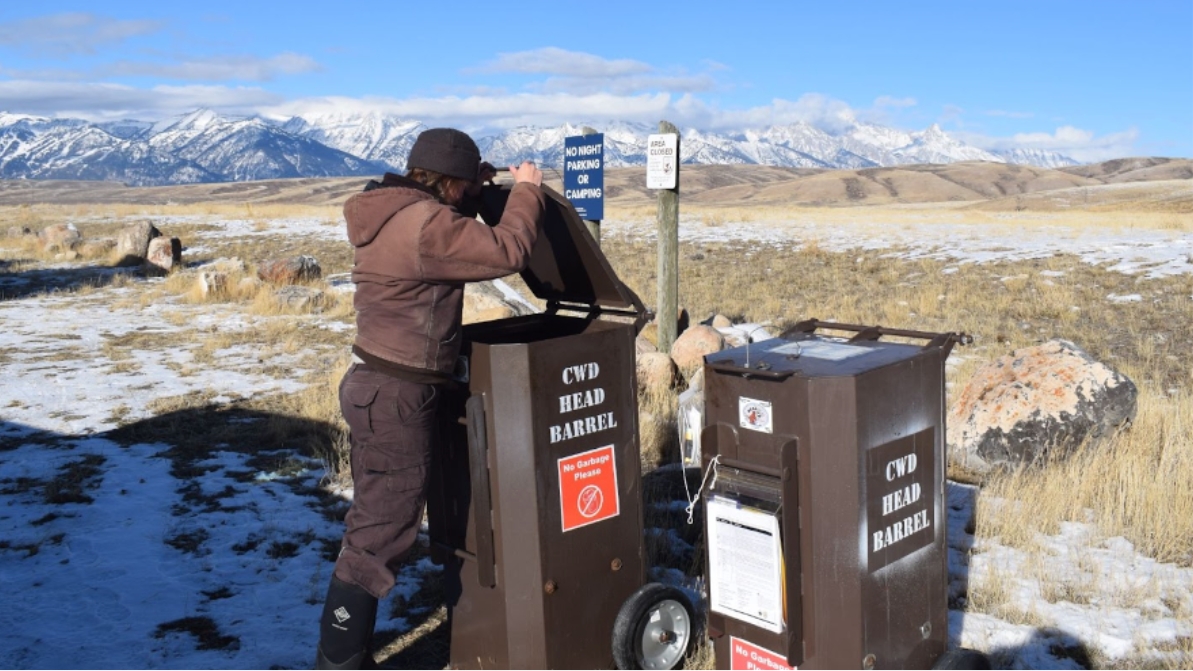Like what you’re reading? Make our newscast part of your daily listening routine. Subscribe on Spotify (or wherever you listen to podcasts).
Against a snow-spattered landscape, wildlife biologist Amy Girard opened the hatch of a mailbox-sized metal “head barrel,” where hunters who kill an elk are required to drop its head. She peered in and saw an empty box.
It was Dec. 13, closing day of the 2024 elk hunting season on the National Elk Refuge and Girard’s headhunting is part of her job with the U.S. Fish and Wildlife Service to better track disease in the largest elk herd in North America.
But there were zero elk heads in all 10 boxes, meaning no hunter had shot an elk recently. That’s indicative of a season that Girard said was slow for hunter harvests from start to finish on the refuge due to a slow start to winter.
Low fall snowfall meant elk were able to feed higher in the mountains for longer.
“We’ve only had a couple of snow events,” Girard said, “so while they have moved towards the refuge, there hasn’t been a lot of pressure to actually move on to the refuge and that’s reduced the amount of opportunity for hunters.”
For elk hunters like Jacksonite Kurt Anselmi, the refuge hunt is often a last-ditch effort to fill tags. He was out on the refuge the final three days before season end and on closing day he spotted his opportunity.
“I took one shot at about 360 yards, missed, and came back [to my truck].” Anselmi said. “Got some good exercise.”
He’s not too beat up though, he’s filled some tags in neighboring lands.
Jackson received over a foot of snow the weekend after the refuge closed.
Girard said about 120 elk were harvested this year on the refuge, just below last year’s about 130 and far below 2022’s approximately 450.
The large harvest from two years ago was attributed to a big snow year that pushed elk onto the refuge during the hunting season.
The hunt has special regulations. Only hunters who apply and receive special permits are allowed to harvest elk, bison and white tail deer within refuge boundaries during season dates.
Hunting on national wildlife refuges in Wyoming and across the U.S., though, isn’t unique. It’s a big way many wildlife officials manage species populations.
On the refuge, hunting is particularly important in managing diseases like chronic wasting disease. Girard said the disease is the Jackson elk herd’s biggest threat to a healthy future.
“Once chronic wasting disease comes in and really takes hold,” Girard said, “we have very few tools to really manage it and to help increase the resilience of the herd.”
She’s doing what she can now to keep prevalence as low as possible.
The hunt is conducted by the U.S. Fish and Wildlife Service in collaboration with Wyoming Game and Fish and the National Park Service.





